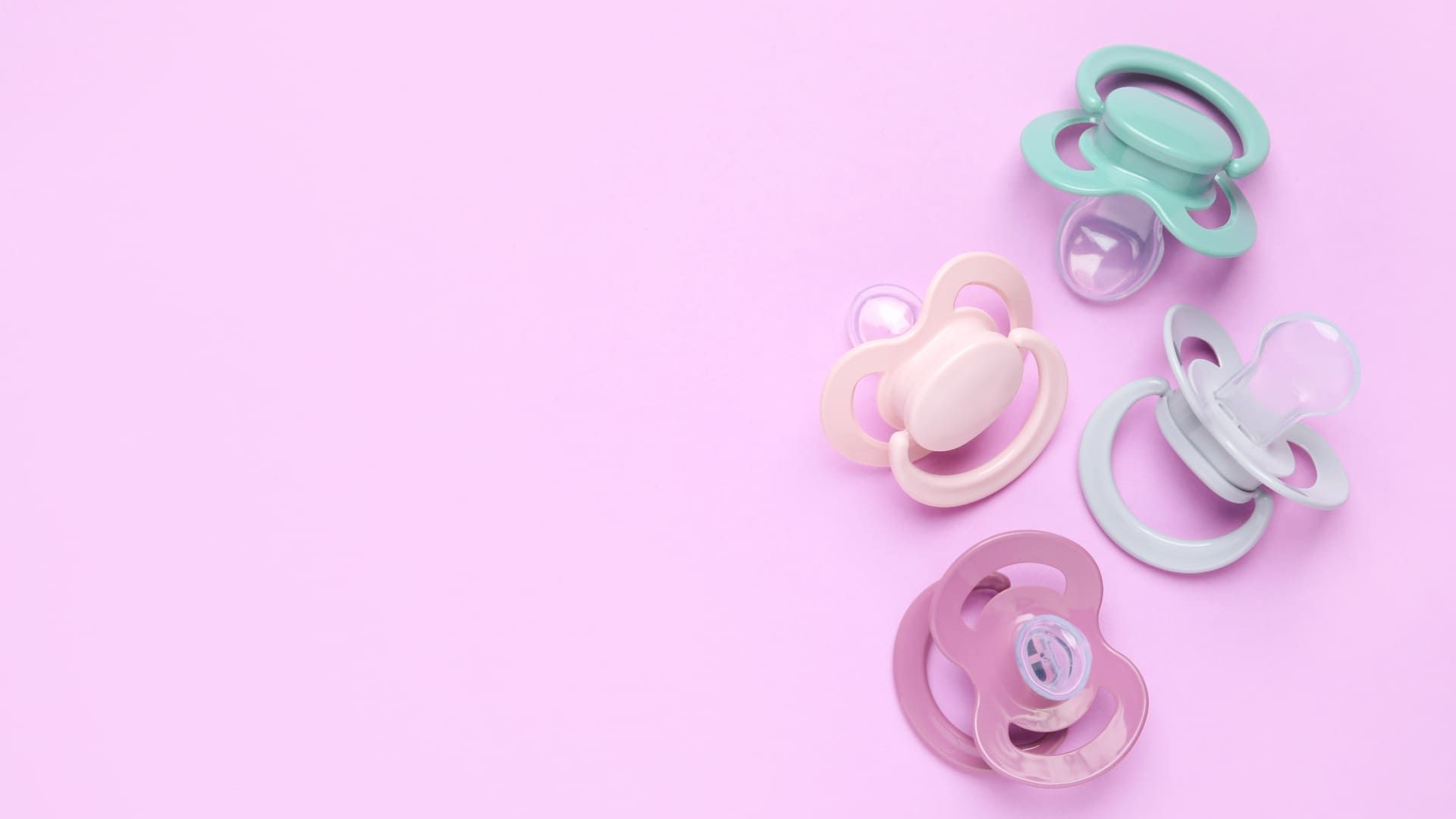Best dummy for newborn breastfeeding

Sarah Johnson, MD

- Should I give my baby a dummy or comforter?
- What is safe to use for my baby?
- When can my baby start using a dummy?
- How do I keep dummies clean?
- Can dummies help with teething?
- What are amber beads?
- When should my baby stop using a dummy?
- How can I help wean my child off the dummy?
- How to choose a suitable pacifier
Should I give my baby a dummy or comforter?
It's up to you and your child which one to utilize. Remember not to give your infant a dummy until the nursing relationship has established itself, which typically happens within the first four to six weeks of life. It is not advised to use comforters on infants younger than seven months old.
Creating a calm sleep setup helps babies settle more easily — you can explore gentle options like the best bed for newborns to make their rest time safe and comfortable.Many infants prefer to hold a blanket or suck on a dummy to help them fall asleep. Some newborns have an intense need to suck that isn't entirely satiated by eating. One way to help ease agitated moments between feedings is to offer a dummy. When used consistently, there is compelling evidence that dummies lower the risk of SIDS (sudden infant death syndrome).
During fussy moments, soft rhythmic motion or gentle touch can work wonders too — see other ways to soothe a crying baby that can complement using a dummy.better with Soula

Support for every woman:
✅ A Personalized Plan to reduce anxiety and overthinking
✅ 24/7 Emotional Support whenever you need it Cycle-Aligned Mental Health Tracking — monitor your mood and symptoms in sync with your period
✅ Real-Time Insights into your energy levels and emotional state
✅ Bite-Sized Exercises to help you return to a calm, balanced state — anytime, anywhere
Babies can be calmed even when they are awake by grasping a 'cuddly' toy or sucking on a dummy (pacifier). Every baby has different tastes; some like to suck on a dummy, some form an emotional bond with a toy, and some like to have both.
Babies are also highly responsive to their parents’ emotions. If you notice tension or worry affecting you, it might help to pause and address mom stress — calmer energy often helps babies relax too.Squares of soft fabric or soft toys are the most common kind of comforters. Infants may also grow attached to a toy that belonged to an older sibling or an article of clothing owned by their parents. Sometimes it's unclear why a certain object takes on such significance for a young child. They form a bond with a comforter for an unexplained cause, apart from parental guidance.
What is safe to use for my baby?
It's crucial to ensure your baby's safety regardless of whether you decide to give them a comforter or dummy.
When providing a comforter for your infant:
- Verify that the comforter your child is using is safe and doesn't endanger their safety.
- Avoid giving your infant a comforter with a dummy attached.
- Don't use any soft toys as comforters in your baby's sleeping quarters until they are seven months old.
- Avoid using comforters with loose ties or batteries.
When can my baby start using a dummy?
If you are nursing, wait to give your child a pacifier until after the first four to six weeks of breastfeeding has been established. Babies who are bottle-fed can be offered dummies from birth. It's common for breastfed infants to seek solace from their mothers and turn to them for solace. By attempting to read your baby's indications, you can gain some insight into what they desire.
Feeding itself is also a bonding moment that shapes early communication. Learning about your birth and feeding support team can help you feel more confident in these first weeks.How do I keep dummies clean?
After use, dummies must be rinsed in cold water and then cleaned with hot water and soap. The same procedures that apply to other feeding equipment also apply to sterilizing dummies. Dummies can be safely cleaned using steam, boiling, or chemical sterilization.
Can dummies help with teething?
Many children become more "oral" during teething, desiring to chew and suck for comfort. When a dummy isn't in their mouth, babies who are accustomed to sucking on it may desire to have it more frequently and cry.
What are amber beads?
A child can wear a teething necklace made of spherical amber chips around their neck. Round, tiny beads made of fossilized tree resin are woven onto a length of string or cord to create the amber. The resin's makers assert that when warmed by a child's skin, its anti-inflammatory qualities can relieve a child's swollen, painful gums.
While necklaces are the most popular, amber bead bracelets and anklets are also available. The beads are available in a variety of hues, ranging from beige to brown and white to yellow.
When should my baby stop using a dummy?
It is not safe to wear bracelets or necklaces made of amber beads. If they become too tight around a child's neck, they pose a risk of strangulation. Additionally, if the infant mouths or chews on the necklace, the beads could break and ingest small pieces of glass. A gastrointestinal perforation could result by swallowing a necklace with a magnetic clasp.
There isn't enough proof to say that jewelry or necklaces made of amber beads can calm a teething child.
If you decide to utilize amber beads, you ought to:
- When your child wears anklets, bracelets, or necklaces made of amber beads, you should always keep an eye on them.
- When putting your child to sleep, take off any jewelry with amber beads, and make sure they don't gnaw on the beads.
How can I help wean my child off the dummy?
Most kids give up sucking between the ages of two and four. Generally speaking, youngsters who are still sucking on a dummy or their thumb when their permanent teeth develop will not have any issues with any of these habits. The likelihood of your baby's teeth becoming misaligned is decreased if you stop them from using a dummy before then.
Restricting the use of dummies to bedtimes is also beneficial. Long-term dummy sucking by a youngster can have an impact on speech development.
How to choose a suitable pacifier
You can gradually cut back on the amount of time you give your baby their dummy, or you can stop giving it to them entirely. A few days may pass before a baby adjusts to living without their dummy because most of them develop an emotional and physical bond with it. Until they get used to not having their dummy, it might be helpful to provide them with comfort in other ways, like as lots of additional cuddles and calming attention.
Every phase of early parenting comes with new emotions and questions. If you ever feel uncertain or need to unwind, an AI Mental Health can help you process your thoughts and find calmer moments through gentle guidance.













